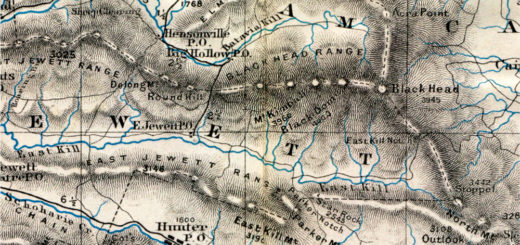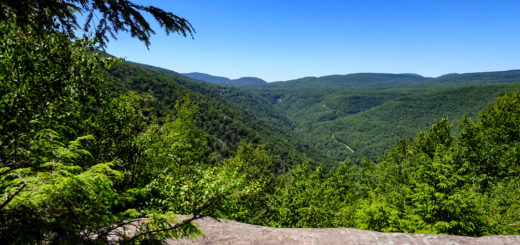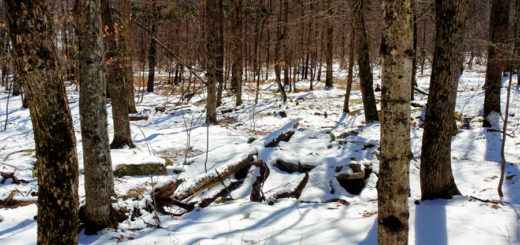The End of Broadway
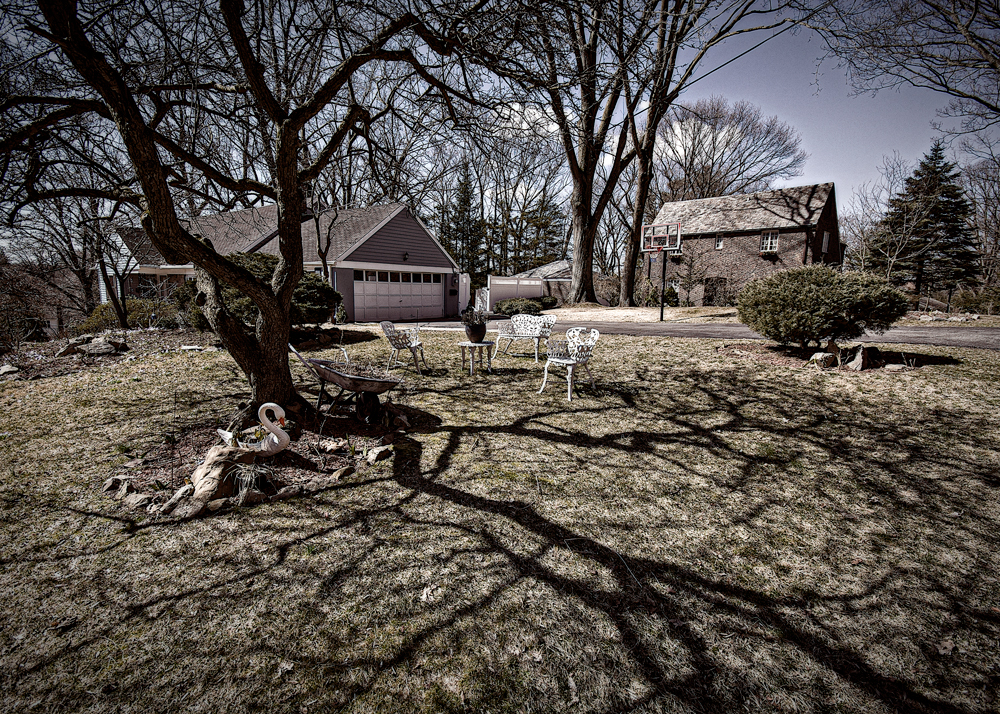 Broadway is a famous street that begins at a famous address in lower Manhattan: One Broadway. George Washington’s headquarters once stood there. The End of Broadway is more obscure. It lies thirty-three miles to the north in Westchester County. You could say that Broadway begins in the Battery and ends in a story by Washington Irving. Not everybody will agree. David Rothenberg and I decided to investigate the matter for ourselves, so we drove to Sleepy Hollow, which—contrary to weekend wisdom—is a long way from the Land of Rip Van Winkle.
Broadway is a famous street that begins at a famous address in lower Manhattan: One Broadway. George Washington’s headquarters once stood there. The End of Broadway is more obscure. It lies thirty-three miles to the north in Westchester County. You could say that Broadway begins in the Battery and ends in a story by Washington Irving. Not everybody will agree. David Rothenberg and I decided to investigate the matter for ourselves, so we drove to Sleepy Hollow, which—contrary to weekend wisdom—is a long way from the Land of Rip Van Winkle.
Upon arrival, we discovered the End of Broadway is a tricky intersection with a traffic light and nowhere to park. We drove around for a while and turned down a side street. There we found a vast parking lot spread out around a memorial hospital. The building looked like a multi-storied mausoleum with windows. A sign with an arrow said: “Emergency Room.” Parking was free so we left the car there and walked back to the tricky intersection where this was supposed to begin.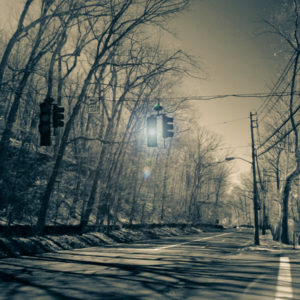
Little there is to recommend the End of Broadway as a tourist destination. Some steeply sloping woods on one side of the road, some vintage suburban houses on the other. Strolling beside a narrow two-lane highway with a ceaseless flow of vehicles is hardly a picturesque ideal. Instead of a sidewalk one finds a pronounced gap in the pedestrian record. Traffic signals hang from a wire above the intersection—along with a sign. This one said: “Wait for Green Light.” We waited for it. When the light changed, we crossed the street. Now we were really at the End of Broadway.
I looked over in the direction of the last house to see what the last number on Broadway might be. There wasn’t any. I did see a faded yellow ribbon tied around an oak tree in the yard. That could mean something. For instance, Broadway begins with the Number One and ends in a lemniscate. Or maybe it was one of those koans that Zen masters like to tease the unenlightened with. Reflecting on all this only thickened the obscurity. Cardinals thrashing about in the boughs of the tree deepened the doubt. Things there were signs but not the ones expected.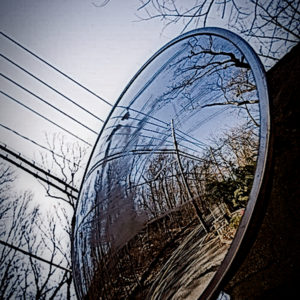
We started walking south toward the far off Beginning of Broadway. It wasn’t long before we came upon a darkly named side street with a gateless gate. It consisted of a couple of stone pillars each topped with a formidable lamp. Affixed to one of the pillars was a large convex mirror. It afforded a curious view of the whole scene. The End of Broadway was now closer than it appeared.
On the other side of the gateless gate was Sleepy Hollow Manor, a maturing development of brick and Tudor homes nestled in a park-like setting. We proceeded along Hemlock Drive. Not a soul in sight. Shadows cast by bare trees maundered on empty lawns and streets. Lawn furniture looked forlorn. Along the edge of one driveway stood a basketball backboard. The net on the hoop was red, white, and blue. I took a black-and-white photo of it.
Soon another sign appeared, a stern one. It said: “No Parking Anytime on the Streets in the Manors.” End of Broadway tourists are not welcome here. Around the next bend there might be an even less congenial sign, something like: “No Sauntering Anytime on the Streets in the Manors.” To pass through a gateless gate on foot during the middle of the day in the middle of the week when all decent people are at work, is to join the ranks of the suspicious. Any minute the Sleepy Hollow police might have descended upon us. We turned around and took our sauntering with us, back to the End of Broadway.
At the tricky intersection we waited once again for the green light. Close by was a shadowy callbox mounted on a utility pole. We had not noticed it before. A sign gave instructions in two languages. The English version went like this: “1) Press & Hold Button to Talk; 2) Begin Speaking After the Beep; 3) Release Button, Listen for Response.” By all appearances, that button had not been pressed in years. We looked at it and considered our options. We settled for a snapshot of the scene. The light changed. And that was the End of Broadway.
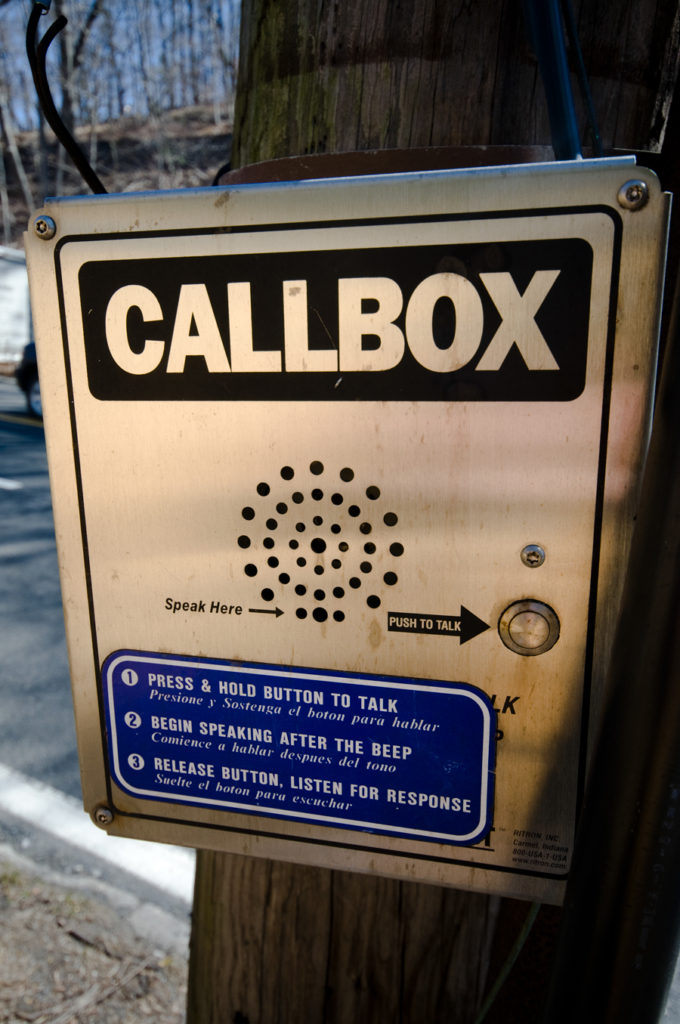
©John P. O’Grady
First print publication in The Mountain Eagle on September 13, 2019
Earlier version appeared as blog post at The Mountain Gazette (2014)
